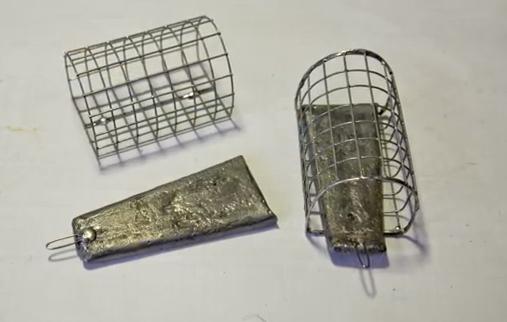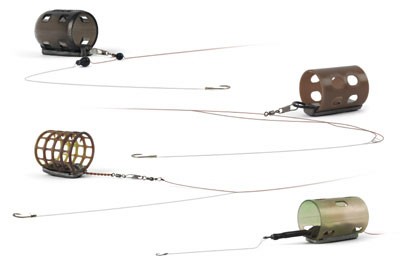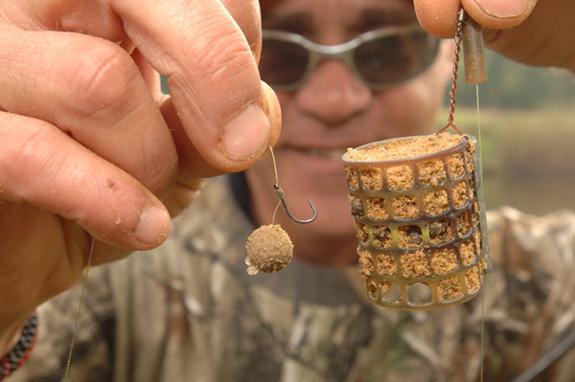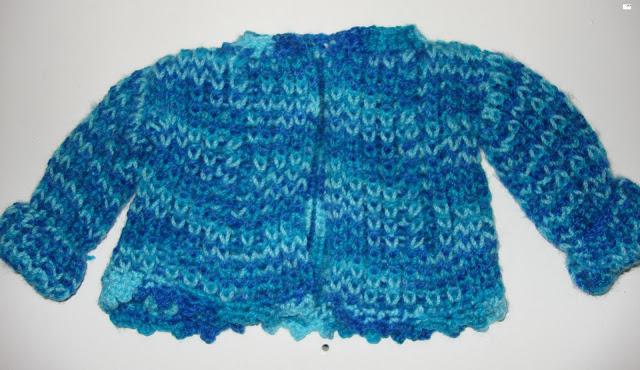Asymmetric loop is simply indispensable for thosewho prefers to fish in rivers and at long distances. The use of such an installation has a positive effect on the bite, since the feeder does not twitch. Accordingly, the fish behaves more calmly, not frightened.
Advantages and disadvantages
As with any tooling, an asymmetric loop forfeeder has its pros and cons. Its advantages include a very good sensitivity (which positively affects the efficiency of fishing), a signal about the bite at the very tip of the fishing rod, the absence of resistance to the weight of the fish.
The drawbacks of the snap are thatAsymmetrical loop when using long and thin leashes can be confused. Explicit "congestion" fishing line makes it too noticeable in the reservoir. The fish may start to behave too carefully. In addition, in reservoirs with a cluttered or overgrown bottom, installation of feeder equipment is also not recommended.

Asymmetric loop or paternoster - what to choose?
Choosing a snap for the feeder, lovers of fishCatching may encounter the following problem. What is better: asymmetric loop or paternoster? What to stop? What equipment should I use when? According to many fishermen, the Gardner loop is very simple, asymmetric, in turn, is particularly sensitive. In fact, you just need to decide in what conditions the fish will be caught.

Do not forget that paternoster knit on the main fishing line. The adapter on the swivel snap-in is missing. As a result, the main line is often twisted.
Asymmetric loop is a separate snap, knit on monofile. It connects to the main line with a swivel. Due to this tackle twists much less.
Principle of action at cool
When a fish gets to the bait and grabs it,there is no particular difference between snap-ins such as an asymmetric loop and paternoster. The use of long leads allows you to easily take prey. The fish, without fear, catches the bait and moves aside to eat their find away from everyone. And here already after the victim will crash into a feeding trough, obvious distinctions between equipments become noticeable.

Use of paternoster
So, the difference is "obvious".When using a paternoster, you do not need to pinpoint the fish. When hitting the feeder of the leash, a sharp hook is thrust into her mouth, and the fisherman needs only to pull his victim to the shore. It is best to use paternoster when catching bream, moving quite sharply.
However, fish are also more suspicious andshy, because he repeatedly grabs and re-spits the bait. When she pulls, she begins to worry even more, that is, for such a bite, longer leashes are necessary. The fish in this case swallows the bait deeper in order to enjoy it in peace.

Use asymmetric loop
The situation at the bottom is completely different.the reservoir when the fisherman refuses the paternoster. An asymmetrical loop for the feeder is thrown, after which a braid is wound for good stretch. The manger begins to move down along the line, as a result, stopping at the lowest point of the rig. It remains only to wait for the fish to grab the nozzle. After that, she drags her to the side until it stops at the top edge of the loop. The feeder tip at this time noticeably twitches. This suggests that it is time for the angler to do hooking up so that its prey does not spit out the bait.
Thus, the fish when fishing for this snap does notundercut, but in reality bite. The free course of the hook allows the fisherman to receive the necessary signal in time. The main thing to use when catching on an asymmetrical loop long leashes. Fish should swallow the bait as deep as possible.
Accordingly, the asymmetric loop remains more sensitive than the paternoster. It will show a particularly good result when fishing for small fish in stagnant water.

What could be the loop?
Variants of this equipment the most various.An asymmetrical loop, the photo of which can be seen in the article, is primarily distinguished by its length. It is this criterion that gives the so-called "free play" snap. In a word, the longer the loop, the later the fish will rest on the feeder. Of course, an active bite will require a reduction in the length of this snap, a passive one, on the contrary, an increase. By the way, the choice of the size of the leads is much more important than the choice between an asymmetrical loop and a paternoster. Every avid fisherman knows about this.
The length of the leash also depends onlocations of bait. The fish behaves absolutely differently in different places of its habitat. In a reservoir with a strong current, the spot of bait turns out to be rather elongated, therefore it will be located one meter from the trough. In this case, the length of the leash is determined on the spot. Small fish, as a rule, feed away from the feeders, large - close. By the way, if you move the feeder slightly, the bite often increases. Therefore, for greater freedom, the bait must immediately lengthen the leash.
However, in any current and for different fish will have to choose the right size. Each fisherman sets the necessary criteria for a leash on his own, only relying on basic recommendations.
В любом случае стоит отметить то, что an asymmetric loop is no worse than a paternoster, despite the fact that the latter is also not inferior to it in effectiveness. That is, the preferences of fishing enthusiasts depend solely on the type of fish, on the depth and course of the reservoir, etc. The most important thing is to try to experiment. An excellent catch fisherman as a result will be provided.
How to knit?
Thus, if the angler wants to reduceoverlaps and increase the elasticity of the leash, he needs exactly asymmetric loop. How to knit it, everyone decides for himself. There are several ways to achieve asymmetry.
The easiest way to take a hard half-meter line.lengths of small diameter (about 0.3 mm). Fluorocarbon is best for tying. Although you can use another line. The main thing is that it was really tough. A suitable fishing line will straighten immediately after it is wound on the finger several times and released.

The next stage of mating is the most difficult.It is necessary to make a tight and tight leash. It is this that affects the tendency of equipment to become entangled. When it is thrown, the feeder should fly forward, and the leash should be deflected to the side. Because of this, he does not get tangled in the loop.
To make a leash, you need a double line about 15 cm long. A double twist is made from it, after which a double knot is tied at its end.
Through the long side of the lineswivel designed for mounting feeders. Next, the required length of the asymmetric loop (30–70 cm) is measured, and it is tightened with a double knot.

Storage
New asymmetric loops stored best insmall plastic bags. Although in the fishing stores you can buy special boxes or covers for them. In addition, today the attention of fans of feeder fishing is represented by a wide variety of boxes in which you can store everything you need for a successful hunt.












